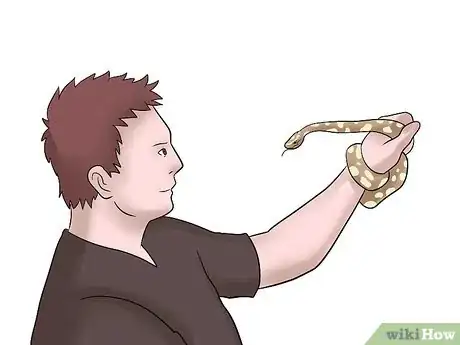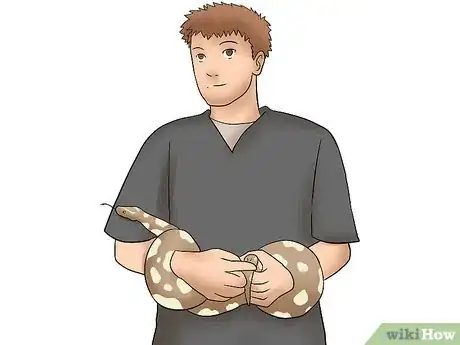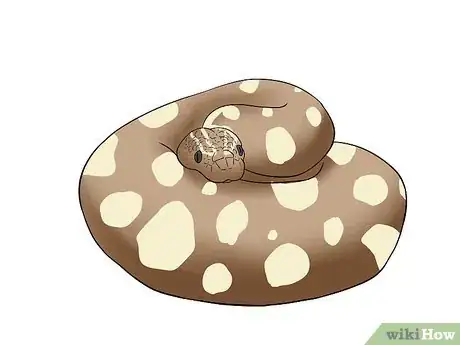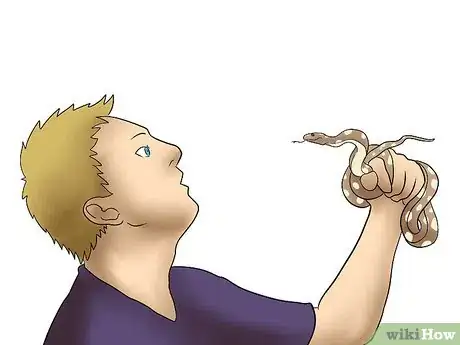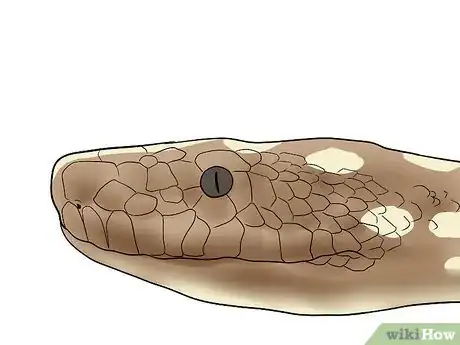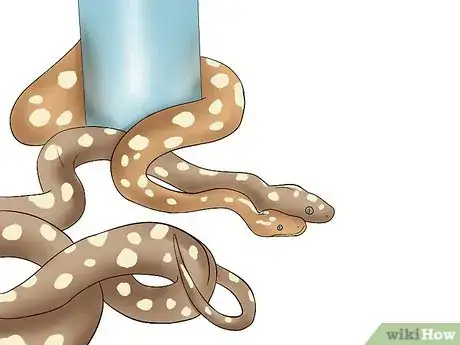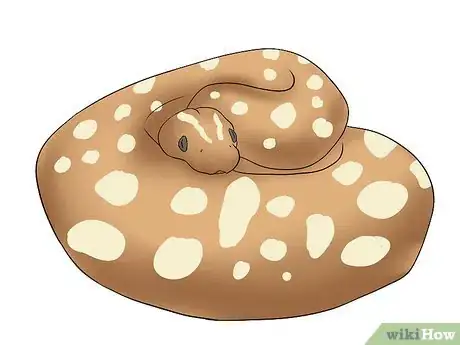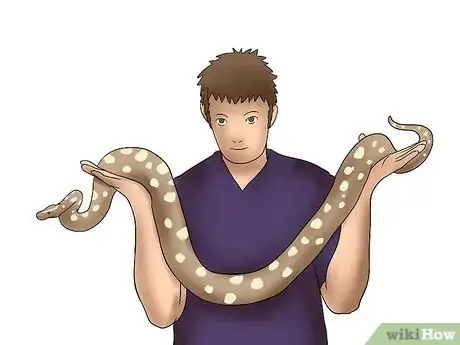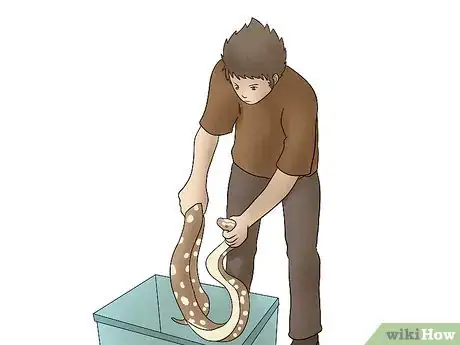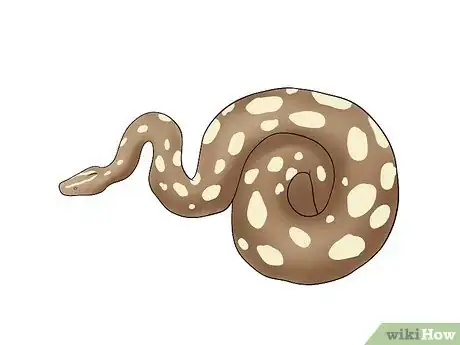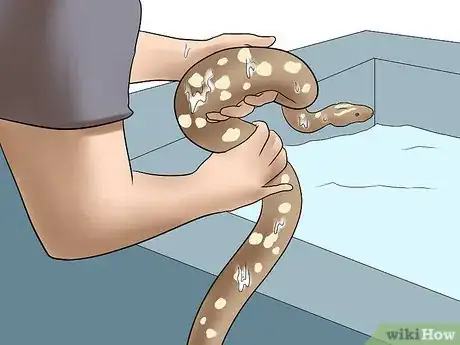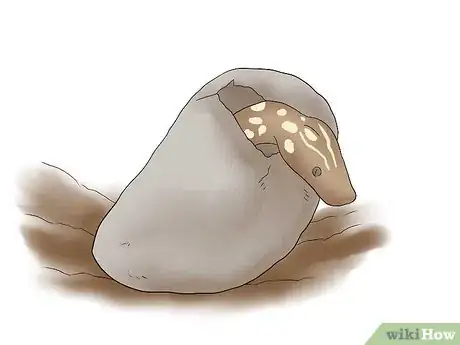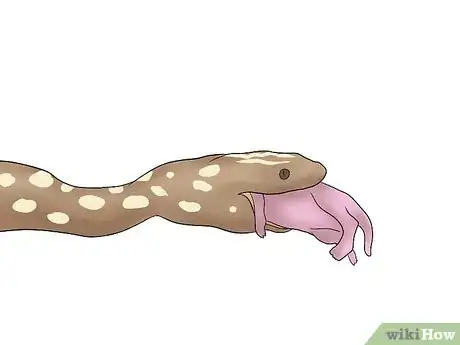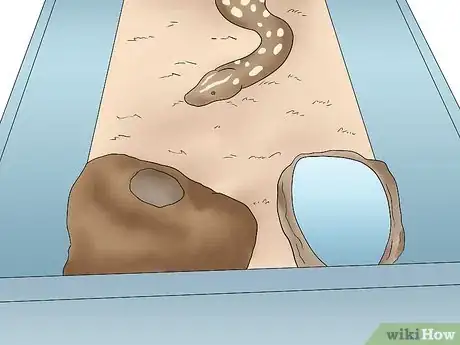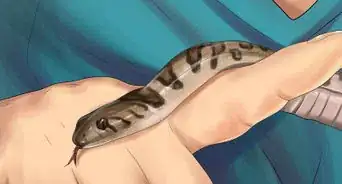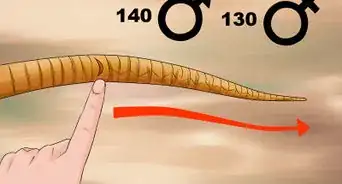wikiHow is a “wiki,” similar to Wikipedia, which means that many of our articles are co-written by multiple authors. To create this article, 44 people, some anonymous, worked to edit and improve it over time.
wikiHow marks an article as reader-approved once it receives enough positive feedback. In this case, 95% of readers who voted found the article helpful, earning it our reader-approved status.
This article has been viewed 305,258 times.
Learn more...
Ball pythons are very popular as pets. Much of this popularity is due to the amazing number of color mutations. There are now over 3000 different, distinctive color and pattern combinations that have been created by selective breeding most commonly known as "morphs". Ball pythons tend to be curious and friendly.
Steps
Preparing to Breed
-
1Make sure they have reached maturity before breeding. It is important that the animals you intend to breed are old enough and large enough. A male typically needs to weigh over 700 grams (24.7 oz) and be at least one year old. Evidence of maturity can be determined by expressing a sperm plug. Gentle pressure on the cloaca (the vent at the back of the snake) will produce a little white, cheesy matter that will tell the male is ready. While females as small as 1,200 grams (42.3 oz) have been successfully bred,[1] most breeders recommend that females be at least 3 years old and 1,700 grams (60 oz) in order to breed. The process is too demanding on smaller animals and represents a health risk.
-
2Determine the sex. It is best to be sure of the sex of the animals you intend to breed. This can be determined by probing. There are video tutorials available that teach the process. This can be dangerous to the animal, so do not probe a snake without first having received proper instruction; or call in an expert.[2] Female snakes will probe to a depth of only 3 or 4 scales. Males will generally probe to 7-9 scales. It is possible to get a false positive for a female if the snake is constricting itself sufficiently to prevent the probe from achieving full penetration.Advertisement
-
3Provide a cooling-off period. In order to become fertile, a cooling-off period is required.[3] The ambient air temperature at night needs to be in the mid 70s (F) low 20s (C) for a period of about a three months. The warm spot in the cage AT NIGHT should be reduced to low to mid 80s (F) low 30s (C), during the day temperatures should return to normal temperature in the high 80s (F). The idea is to replicate the weather conditions of winter in Central Africa. This short cool spell whispers sweet nothings into the brains of these beautiful creatures and tells them that Spring is coming and new life needs to be created.
- During the cooling off period, periodically introduce the male and the female. Have them together for a few days, then apart for a few days. They may try to breed at that time but it won't take. Still, it is a good sign.
-
4Warm it up again. After the cool spell, the temperatures can be returned to normal. Good temperatures for ball pythons produces perspiration on most humans.
Breeding
-
1Produce male excitement. Many male ball pythons also require some extra stimulus stimulation to put them in the mood. The simplest way to do this is to put a number of males together. They will start to notice each other, and raise themselves up in to a nearly vertical stance. Somewhere there is a photograph of six or eight male ball pythons that look like they are dancing. This process really gets them interested in connecting with the opposite sex. Ten to twenty minutes of this activity greatly increases the males' interest in females.
-
2Introduce the female to the male. After introducing them, the best thing is to leave them alone and let nature take its course. Occasionally they may scrap a little, but actual injuries seem to be very rare. Normally they will settle down in a few minutes and the two animals will connect.
-
3Leave them alone. Ball pythons can stay connected for up to two days. It's all right to peek at them, but try not to disturb them. They are in no hurry. They can take a long time to complete this important step. Anything short of a three or four hour coupling is likely to prove ineffective.
-
4Wait. A male ball python needs about a week to recover his potency. If you have more than one female to breed him to, give him a week or so to recover.
-
5Wait some more. The sperm that the male deposits in the female can remain viable for up to 2 years.
-
6Look for signs that the female is becoming gravid, meaning you can see the outline of the eggs inside of her.[4] Once you see that, no need to keep introducing them to each other.
Taking Care of the Female
-
1Prepare the lay box. Get the female a lay box, for example, a Rubbermaid box with damp moss. She will lay eggs and coil around them.
-
2Remove the eggs. Remove the female from the eggs, gently, and place them in incubation substrate inside a container (Rubbermaid box with a lid).[5]
-
3Ensure temperature is good. Set the incubator to 90 °F (32 °C), 32 C. Check the eggs once a week to make sure they good. At this time when you lift the lid to check eggs, they will get air so you don't have to put air holes in the incubation container.
-
4Feed the female. If the female does not eat, try washing her to remove the scent of the eggs. It is important she starts to eat again since laying takes a lot out of her.
-
5Eggs should hatch in about 55 days after laying.
Taking Care of the Babies
-
1Put the babies in their own cage. Babies after hatching should be put in their own separate cages lined with damp paper towel until their first shed. Then you can use newspaper or other substrate.
-
2Feed pinkie mice. Babies start eating pinkie mice within the first week or two and should be fed every five to seven days.
-
3Babies should also have a water bowl and a hide just like adults.
Community Q&A
-
QuestionWhy do you remove the mother from her eggs?
 Community AnswerOne reason is to check for infertile eggs. Sometimes not all eggs in a clutch are fertile. Putting these infertile eggs in the incubator isn't any good because they will just rot. Infertile snake eggs tend to be smaller and more yellow than fertile eggs.
Community AnswerOne reason is to check for infertile eggs. Sometimes not all eggs in a clutch are fertile. Putting these infertile eggs in the incubator isn't any good because they will just rot. Infertile snake eggs tend to be smaller and more yellow than fertile eggs. -
QuestionShould I put the male into the female tank or the opposite?
 Community AnswerI find putting them in a breeding tank or separate tank other than their own is better.
Community AnswerI find putting them in a breeding tank or separate tank other than their own is better. -
QuestionDo I have to have a digital thermometer for my egg incubator to measure the heat?
 Community AnswerYou don't necessarily have to, but I would strongly recommend getting one to ensure the eggs stay at the proper temperature.
Community AnswerYou don't necessarily have to, but I would strongly recommend getting one to ensure the eggs stay at the proper temperature.
Warnings
- Never feed during the time they are together. They could end up fighting over the food item, and it is far too distracting.⧼thumbs_response⧽
- Use extreme care when performing sex determination probes. Serious damage can be done by the untrained. A veterinarian would much rather perform the procedure than try to repair a poorly done one.⧼thumbs_response⧽
References
About This Article
To breed ball pythons, you'll need a male that's at least 1 year old and weighs over 700 grams and a female that's at least 3 years old and weighs over 1700 grams. To get started, lower the ambient air temperature in your snakes' cages to the mid-70s Fahrenheit at night for 3 months, returning temperatures to normal during the day. After a few months, return temperatures to normal and introduce your male and female snake in the same cage. Finally, leave them alone for a couple of days while they mate before separating them again. To learn how to take care of a female ball python after mating, scroll down!
